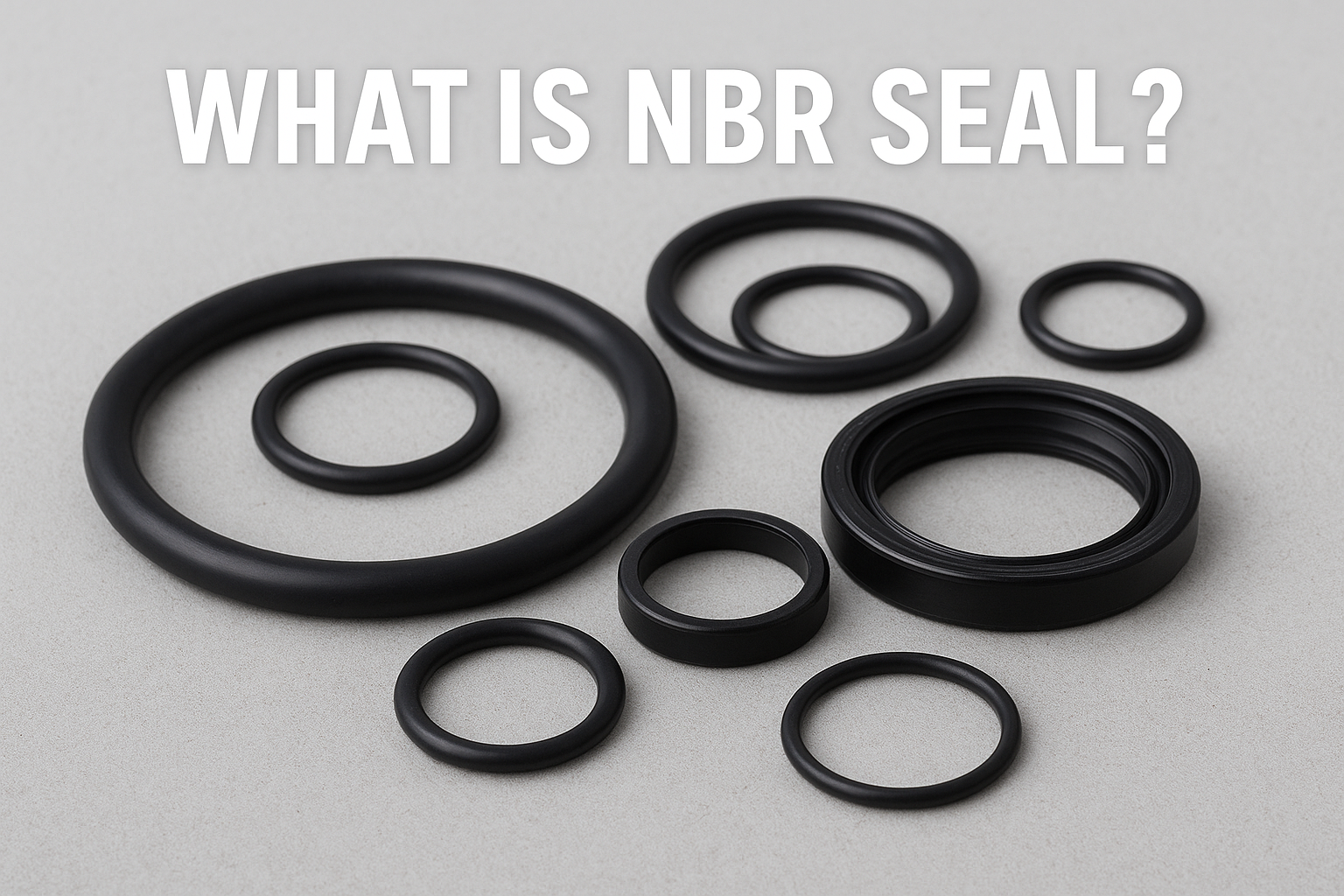NBR is widely used as a sealing material in industrial sealing. In this article, you’ll learn what NBR seals are, their key properties, and the applications in which they are most suitable.
Table of Contents
Toggle1. What are NBR seals?
NBR can be considered an “oil-resistant” rubber. Its full name is Nitrile Butadiene Rubber, a copolymer of acrylonitrile (ACN) and butadiene.
When you see “NBR seals,” it refers to sealing products made from NBR, such as O-rings, gaskets, and oil seals.
When you need to seal against oils, fuels, or hydraulic media, NBR is almost always the first choice. NBR seals are commonly used in applications requiring resistance to oil, fuel, and chemical media.
TYS Seals offers a full range of NBR seals, including hydraulic seals, rotary seals, floating oil seals, and NBR O-rings, to meet your specific needs.

2. Key properties of NBR seals
(1) Oil, fuel, and chemical resistance
NBR has excellent resistance to mineral oil, lubricating oil, and fuel.
Its resistance to aromatic hydrocarbons, high-concentration polar solvents, and ketones is weaker.
(2) Temperature range
Typical NBR can be used between about -40°C and +120°C.
However, its service life will be shortened under more severe conditions (such as continuous high temperature and a strong oxidizing environment).
(3) Mechanical and wear resistance
NBR has good tensile strength, elongation, and wear resistance.
In sealing applications, its compression deformation performance is particularly important.
(4) Price and universality
NBR is widely used because of its relatively low cost and mature processing.
3. Why are NBR seals widely used
The value of NBR lies in its balance between performance and cost. You can enjoy the following benefits at a lower cost:
Excellent oil and wear resistance;
Good tensile strength and seal resilience;
Excellent processability, compatible with virtually all sealing structures;
Excellent adhesion to metal and plastic substrates.
This is why over 70% of hydraulic oil seals worldwide still use NBR as their base material.
4. Application and Selection Recommendations
1. Hydraulic and Pneumatic Systems
It is often used as an elastomer in hydraulic systems. Standard NBR (30% ACN formulation) can reliably seal hydraulic fluids.
If temperatures exceed +110°C for extended periods, consider HNBR as an alternative.
Avoid using unprotected NBR in areas exposed to ozone or sunlight.
2. Automotive and Mechanical Equipment
High-ACN NBR is commonly used in engine oil seals and fuel system seals.
It is suitable for fluids such as mineral oil, diesel, gasoline, and ATF.
For ethanol gasoline (E10 and above), hydrogenated HNBR or FKM is recommended as an alternative.
3. Refrigeration and Air Conditioning Systems
Ordinary NBR is not resistant to Freon (R134a, etc.) and refrigerant oil mixtures.
Specialized “low-temperature NBR” or HNBR materials are required.
4. Food and Beverage Industry
Regular NBR does not meet FDA food-grade requirements.
Select “white NBR” or “FDA-approved formula” and use only for contact with oils and greases.
V. Common Problems and Solutions for NBR Seals
5. Common Problems and Solutions for NBR Seals
| Issue | Possible Cause | Recommended Solution |
|---|---|---|
| Seal hardening or cracking | Excessive temperature or ozone exposure | Use HNBR or FKM material |
| Seal swelling or softening | Exposure to ketones or esters | Choose EPDM or FKM material |
| Oil leakage or poor recovery | High compression set | Increase hardness to 70–90 ShA |
| Leakage at low temperature | Material glass transition | Use a low ACN or low-temperature NBR compound |
6. Rubber Seal Material Comparison Table
| Material | Temperature Range | Key Features | Typical Applications |
|---|---|---|---|
| NBR | -40 ~ +120 °C | Excellent oil resistance, low cost | Hydraulic and fuel systems |
| HNBR | -40 ~ +150 °C | Heat- and ozone-resistant | Automotive and refrigeration systems |
| FKM | -20 ~ +200 °C | High temperature and chemical resistance | Engine and chemical sealing |
| EPDM | -50 ~ +150 °C | Excellent ozone and polar fluid resistance | Water and steam systems |
7. Experience: How to Extend the Durability of NBR Seals
Avoid dry friction: Apply a thin layer of grease during installation.
Control the compression ratio: A compression ratio of 15-30% is recommended for O-rings.
Maintain a smooth surface: Roughness Ra ≤ 0.4 µm.
Regularly inspect for aging: Replace if hardening is observed.
Storage Precautions: Protect from light, ozone, and heat.
You should pay close attention to these operational details during use. Proper care and handling often determine a seal’s lifespan more than the material itself.
Conclusion
When you need an economical seal that offers oil resistance and excellent mechanical properties, NBR seals are your wise choice.
When operating in extreme environments (such as low temperatures, strong oxidation, and UV exposure), you should carefully evaluate or select higher-performance materials. Matching the seal selection with the operating environment is key to achieving a reliable seal.





